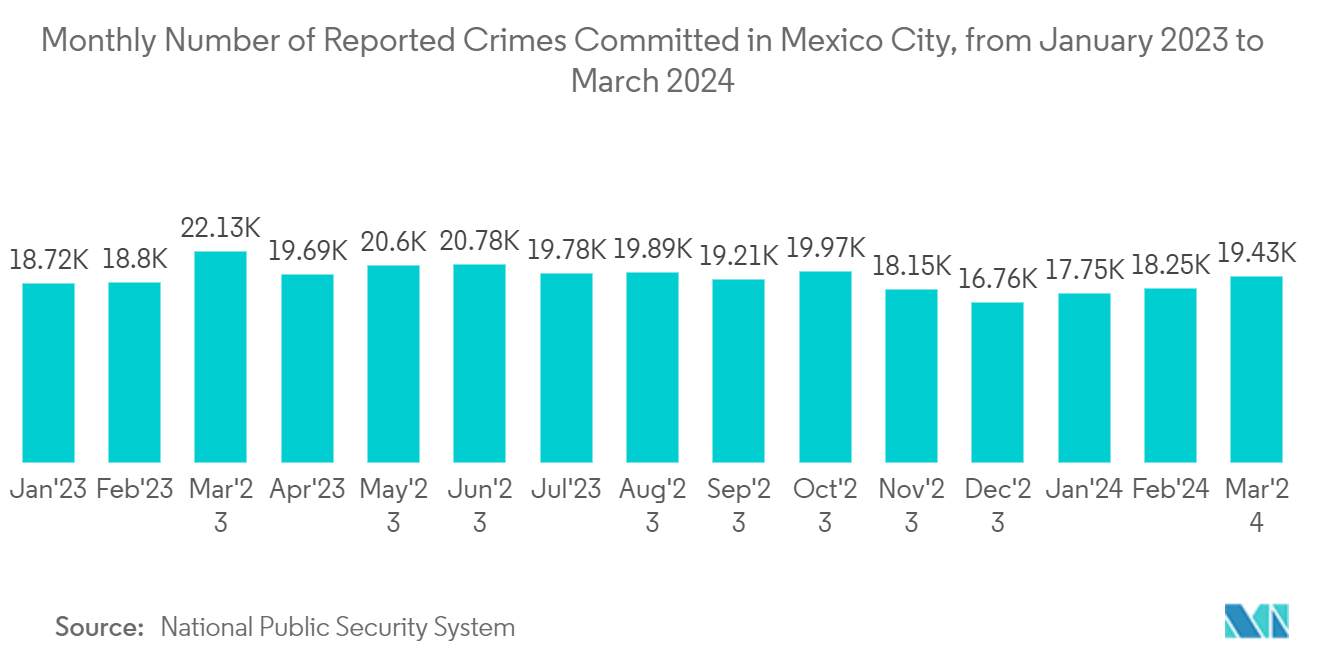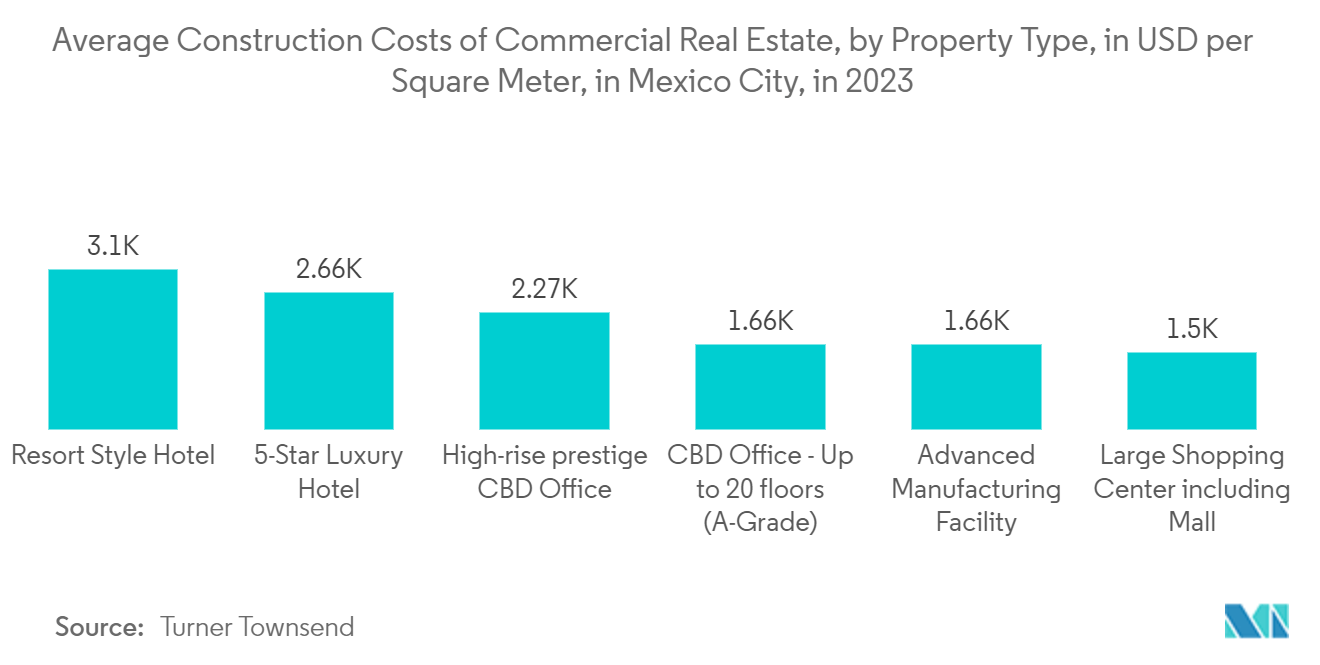Market Trends of Mexico Video Surveillance Industry
Camera Hardware is Expected to Hold a Significant Market Share
- Surveillance camera demand in Mexico is bolstered by the escalating crime rates in the nation's capital. The National Public Security System highlights March 2023 as the peak month for reported crimes in Mexico City, hitting 22,125 cases. In stark contrast, December of the same year saw a significant drop, with reported crimes dipping below 17,000.
- The video surveillance market is witnessing a surge in camera technology, marked by the advent of high-resolution, low-light, and intelligent cameras. These advancements translate to crisper images, better object recognition, and more sophisticated analytics, rendering the cameras increasingly appealing and efficient for commercial users.
- IP-based cameras, with their enhanced connectivity, enable remote access, centralized management, and seamless integration with systems such as access control and building management. This connectivity, coupled with the ability to utilize existing IT infrastructure and tap into cloud services, positions IP cameras as a compelling choice for several end users in Mexico. The scalability of IP cameras is notable; they can be effortlessly added or relocated within a commercial setting, requiring minimal infrastructure adjustments.
- In retail stores, hotels, and office settings, dome cameras are favored for discreet indoor surveillance, boasting resistance to vandalism. Conversely, bullet cameras have extensive applications in outdoor security, particularly for monitoring perimeters, parking lots, and building entryways. PTZ cameras, known for their remote monitoring capabilities, empower operators to focus on specific zones and respond swiftly to incidents. Thermal cameras, on the rise, are pivotal for monitoring critical infrastructure, warehouses, and remote locations, excelling in detecting heat signatures and offering superior visibility in low-light scenarios.

Commercial Segment is Expected to Witness Significant Growth
- The country's retail and hospitality sectors are experiencing rapid growth, propelled by a burgeoning middle class and a surge in tourism. Retailers, shopping centers, hotels, and restaurants widely adopt video surveillance systems to bolster security, combat theft, and streamline operations. With video surveillance, these establishments can closely track customer footfall, fine-tune staffing, and promptly address incidents.
- The need for video surveillance systems has intensified with the burgeoning commercial real estate landscape in Mexico, marked by a surge in new office spaces, shopping centers, and mixed-use complexes. In addition, as per Turner & Townsend, in 2023, resort-style hotels stood out as the commercial property type with the highest construction costs. Specifically, the average price per square meter of internal area was approximately USD 3,102. Such investment initiatives are expected to drive the studied market's growth.
- Video surveillance technologies have rapidly evolved, embracing the Internet of Things (IoT), cloud computing, and artificial intelligence (AI). This evolution has enhanced accessibility and made these solutions more affordable and user-friendly for commercial end users. The integration of high-resolution cameras, advanced analytics, and remote monitoring has significantly boosted the appeal and efficacy of video surveillance systems in commercial settings.
- Commercial end users are increasingly leveraging video surveillance systems for security and enhancing operational efficiency, elevating customer experiences, and bolstering business decision-making. Modern video surveillance solutions, with features like video analytics, people counting, and heat mapping, empower commercial establishments to glean crucial insights. These insights range from understanding customer behavior and traffic patterns to assessing operational performance. Commercial entities can fine-tune their operations with this business intelligence, elevate customer service, and chart more informed strategic paths.


